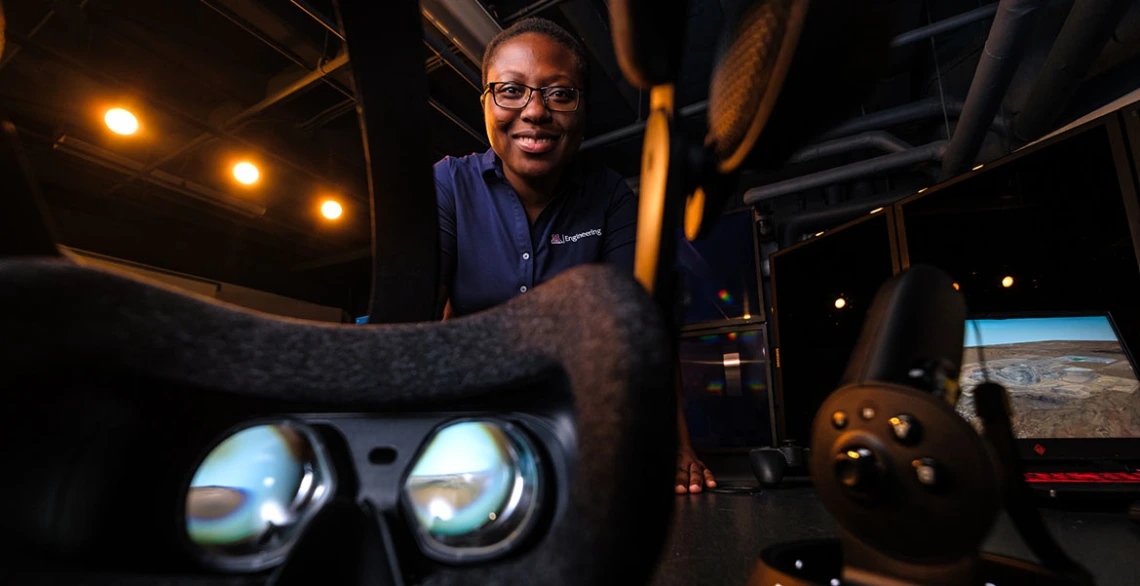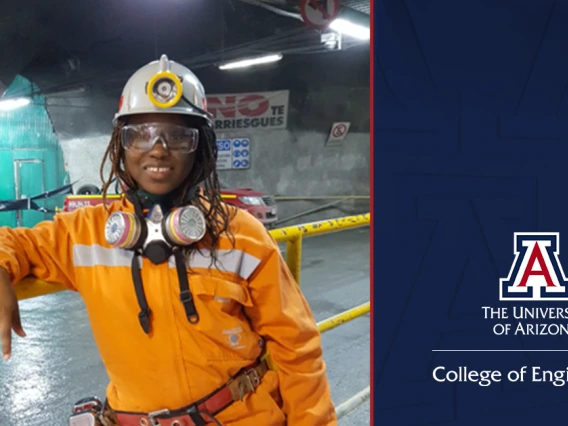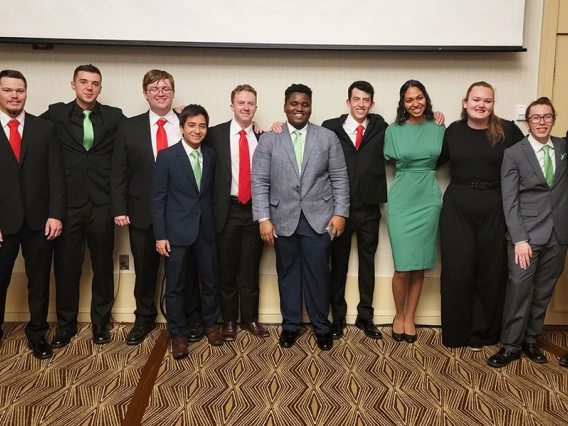The Mine Comes to the Classroom
Angelina Anani places the University of Arizona’s mining classes among the nation’s first to incorporate virtual reality.

No description provided
Angelina Anani, associate professor of mining and geological engineering, wants her students to actually experience a mine as often as possible.
“Mining is a hands-on industry. It requires a person to be there to understand how the rock is responding to us extracting minerals from the ground,” she said. “It's difficult to teach it with a traditional PowerPoint approach and showing pictures.”
So Anani acquired virtual reality equipment – headsets and software that navigates high-resolution scans of the University of Arizona’s Henry G. “Hank” Grundstedt San Xavier Mining Laboratory and other nearby mines – and created digital twins of the mines. Students can navigate these virtual versions of the mines in 360 degrees and can also integrate enhancements using tools such as artificial intelligence to simulate various conditions and events. As the San Xavier Mine develops, MGE will perform additional scans and update the digital twin.
Anani and her colleagues began incorporating the technology during the spring 2023 semester, putting the UA at the national forefront of digital twin use for university instruction. After learning about mine design in the classroom, Anani’s students entered a virtual mine to examine and evaluate its dimensions. She also helped a doctoral student set up a research project that will use the digital twin to advance sustainable decision making through examination of geotechnical risk.
MGE professor of practice Victor Tenorio also used the digital twin in his classes this past year. He sees it as good preparation for students who will use this, or similar, technology in their careers. When a digital twin is connected with equipment at a mine, even autonomous equipment, a remote operator can use that data to make decisions about the physical mine, including adjusting equipment and worker tasks, and even anticipate safety concerns. The operator can also make changes in the virtual environment that translate to the actual mine.
“A digital twin is not just for seeing from a distance, but for interacting with the mine and achieving the goals of production,” he said. “This comes with many ways of seeing things – not just a camera at the other side, but a digital mine or plant environment I can walk through with virtual reality or augmented reality for enhancing some of the elements. It gives the opportunity to look at the goals and objectives.”
To make this training even stronger, Anani hopes to collaborate with industry partners to use their data, such as scans of commercial mines, to create additional twins for classroom use.
“I’m looking forward to bringing more real-life scenarios into the classroom. Presenting the field in a three-dimensional environment allows us to close that gap a little between theory and practice,” she said.
More to Come at the UA
Anani and Tenorio plan to expand digital twin usage during the fall 2023 semester and beyond, while additional MGE instructors bring the technology to their classes. Tenorio hopes to integrate the technology into moon mining instruction and research. He would like to dig a hole at the San Xavier mine site that imitates a lunar crater. Students and faculty could work with the crater from campus using another digital twin.
Recruitment is another application. Anani has partnered with the School of Mining and Mineral Resources to offer a virtual San Xavier mine tour experience to potential students. Surveys show that most MGE students decided to study mining after taking a tour in real life, said Anani.
“Using virtual reality, we can give them the experience of what’s really going on. Also, the current generation is used to working with virtual reality, so they can identify with this technology,” she said.
Digital Twins in the Industry
Just as potential students can learn more about mining realities with the digital twin, so can communities and stakeholders. Mining companies use the technology as a communication tool, said Anani. A visual representation could demonstrate how a project will progress over time and how environmental impact would be mitigated, for example.
A digital twin could also help stakeholders understand the role mining plays in fueling green technologies such as electric car production. A virtual replica of the car can demonstrate the minerals needed for each component, for instance.
The industry is also embracing virtual reality for safety training purposes. Setting a fire in a mine to teach the proper response is too dangerous, but it can be done safely in a virtual environment.
“We’re beginning to realize the potential of this kind of technology and what it can do for the mining industry,” Anani said.



